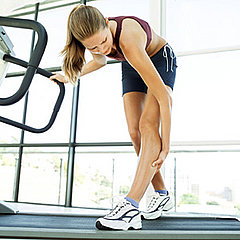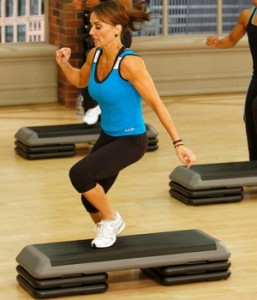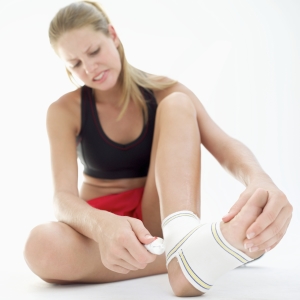

Posted on July 22nd, 2012 by Active4Less | Category: Articles | Permalink
 We’ve all heard this expression on many occasions round the football pitch on the squash court, even in the gym, but what does it really mean? A pulled muscle refers to a tear in the muscle. Tears can be either sudden and acute or long term and chronic.
We’ve all heard this expression on many occasions round the football pitch on the squash court, even in the gym, but what does it really mean? A pulled muscle refers to a tear in the muscle. Tears can be either sudden and acute or long term and chronic.
Acute muscle tears happen suddenly and cause immediate pain. At some stage your probably all seen images of footballer pull up on the pitch or athletes in a race fall away to the side of the track. These are acute muscle tears and cause immediate loss of function. Swelling will occur which can be reduced through immediate rest, ice, compression and elevation. You must let these acute muscle tears heal before you resume similar strenuous exercise. There will always be less demanding remedial exercises that can be prescribed to promote healing. This type of muscle tear can be caused by lack of an effective warm up prior to exercise, stress and fatigue and imbalances in opposing muscles.
Chronic muscle tears develop of time and often occur because of an unwillingness to rest or adapt the exercise that aggravates the muscle tear. This type of tear is particularly common in athletes participating in endurance exercise, such as cycling and running. The pain often start mild and builds during exercise, warmth in the muscle can often disguise the full impact of the tear. An occasions the torn muscle will go into a spasm to protect itself from further use and damage. Do not ignore the warning signs. This is the time to stop. As with acute tears, you must refrain from the exercise that aggravates the injury and allow for remedial treatment and repair. Stretching, mobilisation, strengthening and massage can all be of benefit.
Tags: fitness, injury, muscles
Posted on July 16th, 2012 by Active4Less | Category: Articles | Permalink
 The advantages of Interval Training compared to continous training are vast:
The advantages of Interval Training compared to continous training are vast:
A) Increased cardiovasuclar strength (fitness in general)
B) More calories burnt
C) Greater enjoyment
So it’s better for you, it burners more calories and it’s more enjoyable! Why isn’t everyone doing it??
Interval training refers to two or more different levels of intensity. Continuous training refers to training which is kept at the same level of intensity for the duration of the exercise. Interval training allows us to switch between intensity levels. There are all sorts of types of interval training, the two most famous being the fartlex training and tabata training but they are all based on the same principle of changing the level of effort throughout a session.
The general idea of interval training is to increase the level of effort for a short period of time to level which can not be sustained for long. For example if continuous training was set at 70% of MHR (maximum heart rate) we would interval train by working at a higher level of say 85 – 95% for a minute, before allowing the heart rate to drop down to around 50-60%.
Everyone. There are no set rules for how hard or long the intervals need to be set at, so interval training can be used on all levels of level of fitness and experience. Interval training is bread and butter for an professional athlete or anyone looking to increase their performance in sport and/or their cardiac output and lactate tolerance.
Posted on July 11th, 2012 by Active4Less | Category: Articles | Permalink
 There is one key term that needs to be understood by anyone wishing to build muscle – Progressive Overload.
There is one key term that needs to be understood by anyone wishing to build muscle – Progressive Overload.
There are lots of other factors that contribute towards building muscle such as nutrition, supplements, recovery, training type, and sleep but they won’t count for anything if don’t understand Progressive Overload.
In order to stimulate growth the muscles need to be pushed more than have been previously. If the same demand is put on the muscles as in the pervious session then there is no reason for your body to adapt. You are already strong enough for the required demand.
Our bodies are very clever, they will adapt to demands put on the body, know as anabolism in terms of muscle growth. This works the same if muscles are not used, the reverse effect of your muscles breaking down know as catabolism.
To stimulate an anabolic effect (muscle growth) the muscles need to be worked with increased demand in the form of either repetitions or load. Depending on the goals of each individual muscle building the reps and sets are adjusted to hit a particular type of muscle twitch fibres to maximize either size, performance or both.
Creating the optimum environment for muscle growth pulls in lots of different factors, recovery and nutrition being the next two most important factors after overloading but the number one contributor for disappointed weight lifters is the lack of progressive overload!
The overload doesn’t need to be massive. As the ‘progressive’ suggests, small but regular increments in demand will make a big difference to your training.
Tags: abs, fitness, muscles, toning, training
Posted on July 6th, 2012 by Active4Less | Category: Articles | Permalink
 Muscle cramps can be very painful and often occur with little or no warning. Don’t panic they usually have little medical consequence, they just happen. Cramps are muscle spasms and occur in two different forms. Firstly there is the nocturnal cramp, which as the name suggests, occurs at night and often in the calves. Then there is the exertional cramp that occurs during long bouts of exercise.
Muscle cramps can be very painful and often occur with little or no warning. Don’t panic they usually have little medical consequence, they just happen. Cramps are muscle spasms and occur in two different forms. Firstly there is the nocturnal cramp, which as the name suggests, occurs at night and often in the calves. Then there is the exertional cramp that occurs during long bouts of exercise.
Generally over-exertion is the usual cause of cramps during exercise, but can also occur if you fail to adequately prepare your body for exercise
A stitch is essentially a cramp in the diaphragm when breathing heavily. To reduce the likelihood of a stitch, try periodically breathing out heavily to force all the contained air out of the body. The diaphragm can get trapped in a contracted state and spasm. Forced breathing can help to relieve this. Otherwise try to breathe regularly during exercise. The other cause of a stitch can be eating too close to exercise. It is best to try and eat anything other than a snack at least 1 hour before exercising. When you exercise, the body diverts the blood in the stomach to the muscles used in exercise.
This leaves undigested food, which can cause discomfort. Different people are affected by this in varying degrees, so it is worth experimenting with your food intake. This is little advice available for reducing nocturnal cramps. They can occur quite frequently and then for little apparent reason, disappear for ages. If they persist, try to stretch the relevant muscles prior to bed.